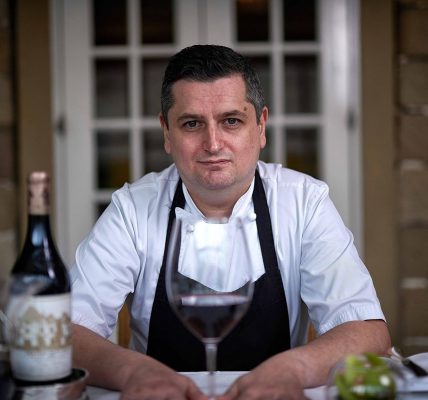How architect Le Corbusier's French Riveria log cabin inspired a retreat at Mabgate Art Hostel in Leeds
How architect Le Corbusier's French Riveria log cabin inspired a retreat at Mabgate Art Hostel in Leeds
A cabin put up for locals of inner-city Leeds was inspired by architect Le Corbusier’s retreat. But can it persuade people to live more sustainably? John Blow reports.
In the South of France lies a cosy little log cabin that’s a mere 3.6 by 3.6 metres in length but provided the perfect retreat for a famous architect..
Swiss-French designer Le Corbusier built his “Cabanon” in 1951 on the coast of Roquebrune-Cap-Martin as an escape from hectic Parisian life and reportedly vacated to it every summer for 18 years.
There can’t be much in common between inner-city Leeds and the French Riviera, but a new cabin inspired by the original – which is among the architect’s works included on the UNESCO World Heritage List – has been constructed in an effort to teach people about the virtues of simple, sustainable living.
It has been built as part of charity East Street Art’s The Space Between events schedule, which has taken place from May and finishes next month, itself part of a UK-wide cultural programme called Season for Change, aiming to inspire urgent action on the climate crisis.
Artist and professional architect Nicolas Henninger designed and built Cabanon – one of four works commissioned by the organisation – from reclaimed wood at the Art Hostel yard in Mabgate, a former Presbytery building, and people have been invited to stay overnight in the bothy-style cabin to experience minimalist and eco-friendly surroundings.
It is hoped people invited to stay in the cabin will explore their habits and a more sustainable way of life.
Henninger believes that although we hear many big statements about the environment, it is also worthwhile to have small, graspable concepts such as his Cabanon to engage people when it comes to the subject.
“We need to take action to prevent this climate change and we need to make some small statements about providing projects which are simple to understand and grab,” he said.
The east London-based architect said that “I believe the construction industry is one of the biggest waste producers” both in general and through carbon.
“For me this was the opportunity to respond to it by creating a little cabin,” he says.
Rather than a 100-mile trip to the countryside, he says, “it would be great that a mile away in the city you can still find places which provide this haven [when you have a feeling of} ‘I work too much, I’m too stressed, I need to breathe, I need to retreat’.”
He was interested in Le Corbusier’s decision to build and take holidays in a small wooden hut when he had made his name designing large concrete buildings, and for Henninger it begged the question: “What do we need in terms of space?”
He also took inspiration from the tiny house movement in the USA, which advocates for small and simple living spaces.
Henninger has lived in London for more than a decade but was for many years a member of the Parisian art and architecture collective EXYZT, an outfit that specialised in projects just like the one he’s completed in Leeds.
He says that usually it is “the same crowd” who are aware of what’s going on in the art world, but East Street Arts is especially good at getting the word out to people who wouldn’t usually be exposed to culture of this kind.
That’s what it’s all about for Helen Moore, the organisation’s engagement lead, who says “we’ve really tried to aim at the local neighbourhood”.
“For Nicolas’ cabin we invited some university students to help support with the build for some of the outside furniture that goes with the cabin. And we’ve also invited some local residents to stay in the cabin, which they are doing. The first person stay and it was actually somebody who’s on our neighbourhood forum for the area. And then we’ve also invited local groups to visit Nwando Ebizie’s installation. And so we’ve got various groups coming in for that.”
The latter installation, called Extreme Unction Vol. 2, is inspired by Middle Eastern hammams – a type of communal bathing space – that functions as a “multi-sensory” performance area.
Another piece is Jake Krushell’s Turbine, which has been inspired by Hugh Piggott’s book The Wind Turbine Cookbook, and creates the energy to power Herringer’s Cabanon. And Xavier de Sousa’s project Regnant involved the collaboration between a ceramicist and people seeking sanctuary in Leeds to participate in pottery workshops. They created the plates, bowls, and serving pots used in a live performance about migration, identity, belonging, power structures and how they collide with the issue of climate change.
Helen says: “The neighbourhood that we’re based in is really diverse and people are experiencing economical issues as well, and obviously they’ll be affected by climate change, or may already have been affected by climate change because there’s a big refugee population in the area.”
The first person to stay in the cabin – after June there an idea to tour the installation is being considered – was Karina Kruk, who lives locally.
Helen says it has received a positive reception from those who have accepted the invite.
“People say it’s really calm space to stay in, like a little haven in the city, that’s made them think about technology and living within their means, and what that means.
“And we’ve asked everyone to make their own individual pledge as well about climate action and what they feel they could do as an individual to be involved in supporting the cause, really, so that’s been really nice as well.”
It is the latest effort by the city’s artistic community to respond to the daunting, global challenge of climate change.
Sustainable Arts in Leeds, for example, has been running as a community interest company for around a year and has a membership which includes, along with Opera North and ITV, the likes of Leeds City Council, Screen US, Channel 4, Leeds Arts University and more.
It comes as the Government has set a target to reduce the UK’s emissions by 78 per cent by 2035 compared to 1990 levels.
SAIL has drafted its own year-by-year plan for arts organisations in Leeds to collectively become net zero – achieving a balance between the amount of greenhouse gas emissions produced and the amount removed from the atmosphere – by 2030.
Speaking about the artistic response to climate change, Karen Watson, who is co-director and co-founder of East Street Arts with Jon Wakeman, says: “I think sometimes it feels a little bit out of people’s hands but actually what we tried to do with this project is say ‘Everybody can make a difference, no matter how small it feels at the time’. I think that would be a key message that I’d like to get across.
“So just by participating and learning, and finding out more about how things work and how you can make a difference [it] is really important.”
Architectural Digest has called Charles-Édouard Jeanneret, known as Le Corbusier, “a pioneer of modern architecture and a leader of the International Style”.
Among the most celebrated buildings by the self-taught architect – who was also a painter and writer – were Villa Savoye outside Paris, Notre Dame du Haut in Ronchamp, France, and the Unité d’Habitation in Marseille.
In 2016, 17 of his architectural works were named UNESCO World Heritage sites.
However, he has also in recent years, in a number of publications, been accused posthumously of fascist sympathies and anti-Semitism.
Le Corbusier died of a heart attack aged 77 in 1965 while swimming off the coast of the French Riviera.










